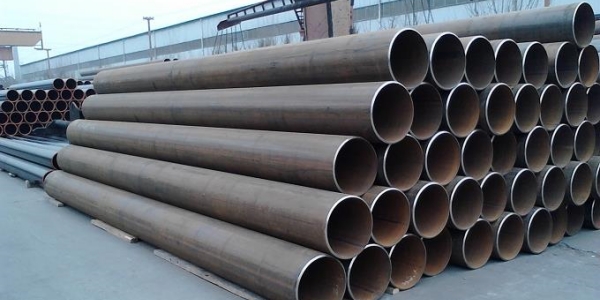Non-destructive testing (NDT) is crucial for ensuring the quality and integrity of Longitudinally Submerged Arc Welded (LSAW) steel pipes. Various NDT methods are employed to detect and evaluate defects without causing any harm to the material being tested. Here are some common non-destructive testing methods used for LSAW steel pipes.

Ultrasonic Testing (UT):
Ultrasonic testing is widely used for the inspection of LSAW steel pipes. High-frequency sound waves are transmitted into the material, and the returning echoes are analyzed to identify defects such as weld discontinuities, porosity, and laminations.
Radiographic Testing (RT):
Radiographic testing involves the use of X-rays or gamma rays to examine the internal structure of the weld. This method is effective for detecting internal defects like porosity, inclusions, and lack of fusion.
Magnetic Particle Testing (MPT):
MPT is suitable for detecting surface and near-surface defects. The material is magnetized, and iron particles are applied to the surface. These particles accumulate at areas with magnetic flux leakage, indicating the presence of defects like cracks and discontinuities.
Liquid Penetrant Testing (LPT):
Liquid penetrant testing is used to detect surface-breaking defects. A liquid penetrant is applied to the surface, and after a specified dwell time, excess penetrant is removed. A developer is then applied, which draws the penetrant out of any surface defects, making them visible.
Visual Testing (VT):
Visual inspection is a fundamental method that involves a direct visual examination of the LSAW weld and the surrounding areas. It is often used in conjunction with other NDT methods.
Eddy Current Testing (ECT):
Eddy current testing is suitable for detecting surface and near-surface defects. It works by inducing eddy currents in the material using a coil, and changes in the currents are analyzed to identify defects.
Acoustic Emission Testing (AET):
Acoustic emission testing monitors the release of stress-induced acoustic signals from within the material. It can detect the growth of defects or crack propagation during loading.
Phased Array Ultrasonic Testing (PAUT):
PAUT uses multiple ultrasonic elements that can be individually controlled to steer and focus the ultrasonic beam. This allows for more detailed and efficient inspections, especially in complex geometries.
It's common to use a combination of these NDT methods to ensure comprehensive inspection coverage. The choice of the specific method depends on factors such as the type of defect to be detected, the size and thickness of the material, and the applicable codes and standards. Regular and thorough NDT is essential to ensure the structural integrity and reliability of LSAW steel pipes, particularly in critical applications like oil and gas pipelines.

 English
English Español
Español




 Tel : +86-18565811709
Tel : +86-18565811709 Email :
Email : 

 News
News




